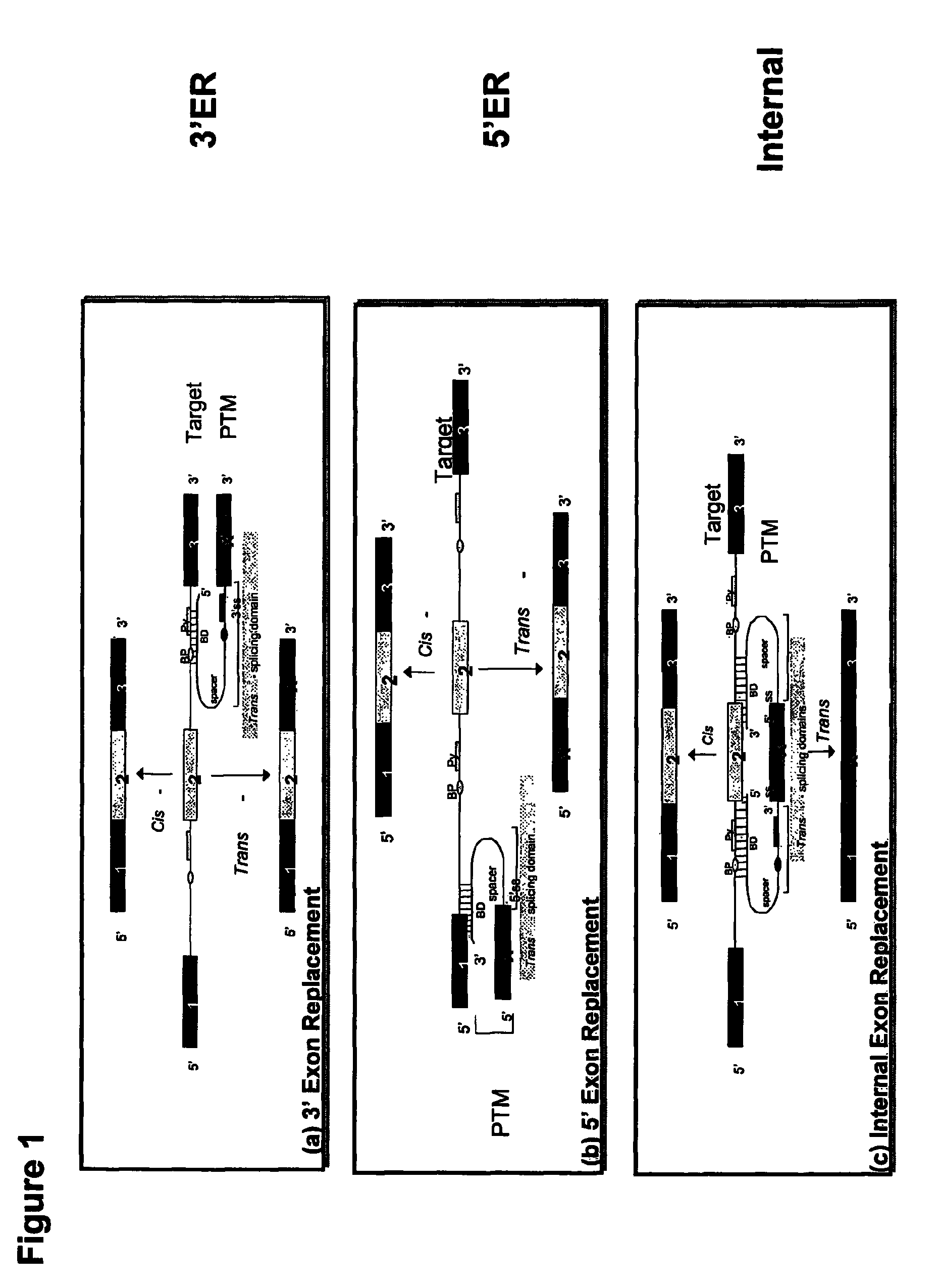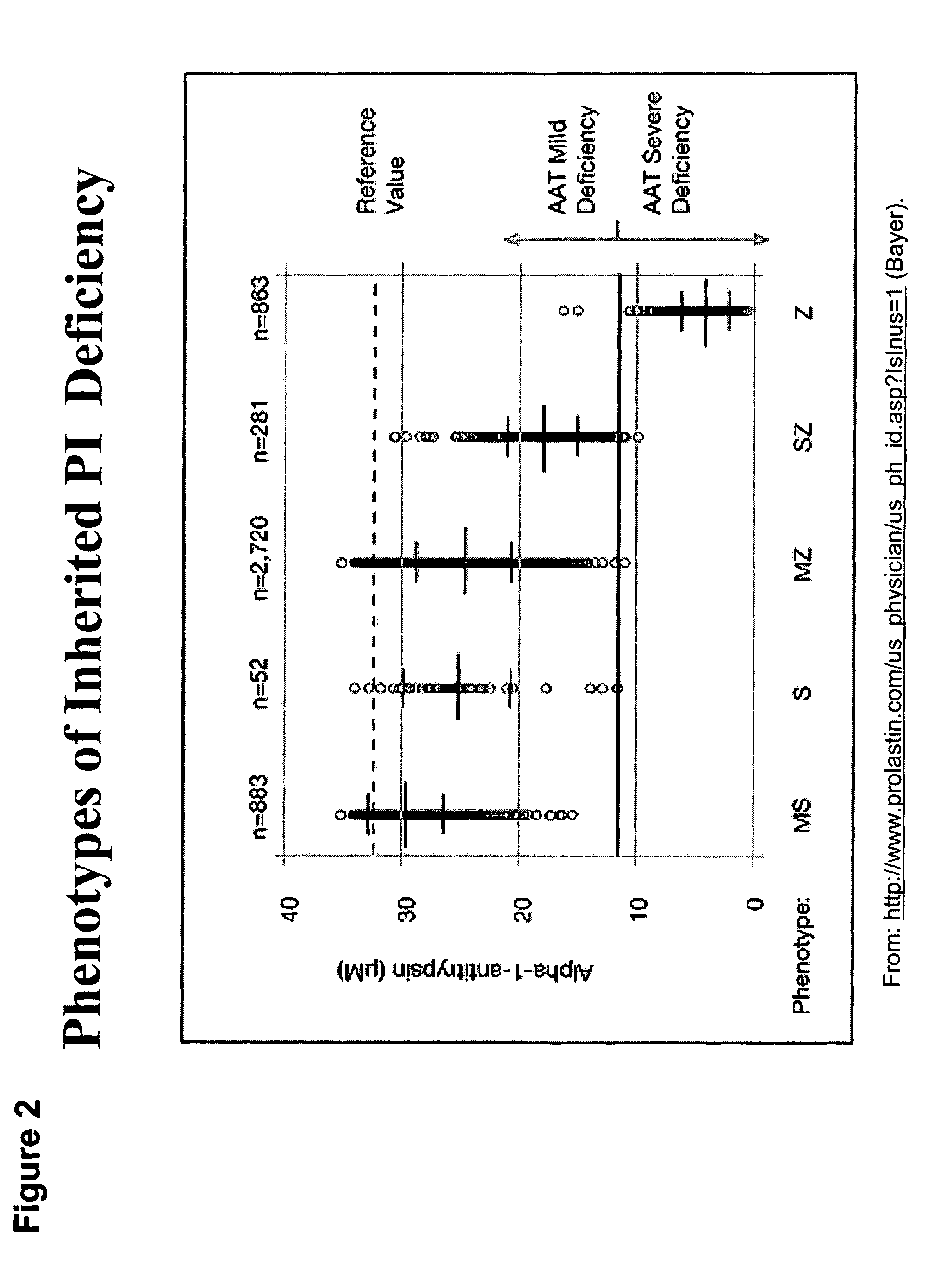Correction of alpha-1-antitrypsin genetic defects using spliceosome mediated RNA trans splicing
a technology of spliceosome and gene, applied in the field of correction of alpha-1-antitrypsin genetic defects using spliceosome mediated rna trans splicing, can solve the problems of suboptimal effectiveness of this therapy and progress to become life-threatening, and achieve the effects of reducing the accumulation of toxic aat protein, reducing the pathology of lung and liver, and reducing or eliminating expression
- Summary
- Abstract
- Description
- Claims
- Application Information
AI Technical Summary
Benefits of technology
Problems solved by technology
Method used
Image
Examples
Embodiment Construction
[0035]The present invention relates to novel compositions comprising pre-trans-splicing molecules (PTMs) and the use of such molecules for generating novel nucleic acid molecules. The PTMs of the invention comprise (i) one or more target binding domains that are designed to specifically bind to a SERPINA1 pre-mRNA, (ii) a 3′ splice region that includes a branch point, pyrimidine tract, and a 3′ splice acceptor site and / or a 5′ splice donor site; and (iii) SERPINA1 sequences designed to correct genetic defects in the SERPINA1 RNA. The PTMs of the invention may further comprise sequences that upon processing, yield duplex siRNAs that function to reduce the level of toxic AAT protein within a cell. The PTMs of the invention may also comprise one or more spacer regions that separate the RNA splice site from the target binding domain and / or additional nucleotide sequences such as safety sequences. The methods of the invention encompass contacting the PTMs of the invention with a SERPINA1...
PUM
| Property | Measurement | Unit |
|---|---|---|
| nucleic acid | aaaaa | aaaaa |
| genetic defects | aaaaa | aaaaa |
| frequencies | aaaaa | aaaaa |
Abstract
Description
Claims
Application Information
 Login to View More
Login to View More - R&D
- Intellectual Property
- Life Sciences
- Materials
- Tech Scout
- Unparalleled Data Quality
- Higher Quality Content
- 60% Fewer Hallucinations
Browse by: Latest US Patents, China's latest patents, Technical Efficacy Thesaurus, Application Domain, Technology Topic, Popular Technical Reports.
© 2025 PatSnap. All rights reserved.Legal|Privacy policy|Modern Slavery Act Transparency Statement|Sitemap|About US| Contact US: help@patsnap.com



